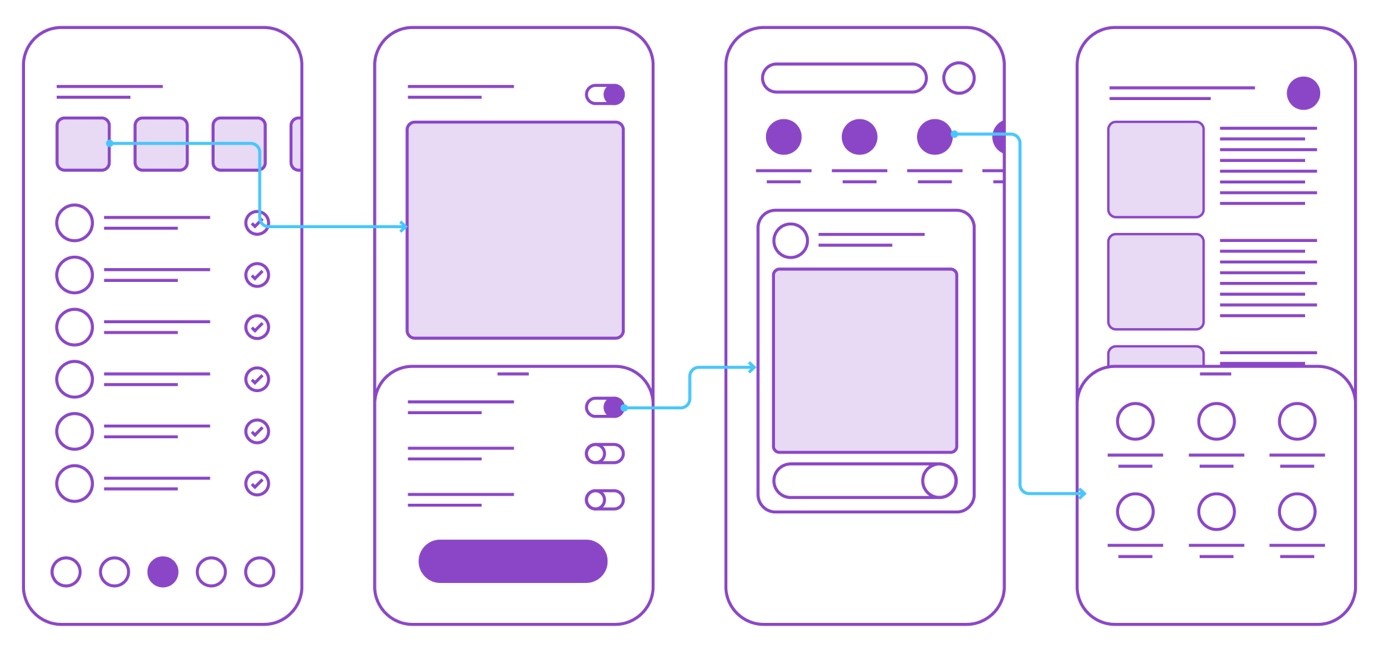Blog

May 2025
Building better websites through effective communication – from brief to launch
An effective website encourages action – whether that’s buying a product, signing up for a service or getting in touch. However, an effective website doesn’t just happen. It requires strategic planning, thoughtful design and clear and consistent communication with your digital team.
Whether you’re launching a new website, or redesigning your existing one, understanding the dos and don’ts of communicating with your web designer is critical to getting results that realise your vision and meet your goals. This blog explores key strategies for web-based communication, including the ten principles of effective web design, visual communication principles and how to create a website launch communications plan that drives success.
Untangling the process helps clients and web designers establish common goals and clear focal points for the project. Your Transform digital team will be your guide throughout this process meaning transparent communication on both ends is critical. Establishing key milestones helps keep projects on track while also ensuring the process is collaborative.
The ten principles of effective web design
Before beginning the project, it’s good to establish an understanding of best practice. A well-designed website isn’t just about aesthetics, it’s about functionality and usability. Throughout the discovery and design stages of a website project, your digital team will discuss these ten principles – forming the foundation of effective digital design:
Demystifying the Web Design Process
Before kicking off new website designs, your digital team will set up a briefing and discovery session with you, and other key creatives and technical teams, such as content writers and SEO experts, to talk through:
This opens the conversation for a clear brief so your web designers, developers and other marketing experts can jump straight into research, ideation and design with a clear picture of your needs. The process will feature key milestones and checkpoints throughout to ensure ongoing clarification, collaboration and transparency between clients and designers – no one should feel surprised throughout the process (except for the exciting surprise of seeing design concepts!).
Having the creative team involved from the beginning ensures:
Your website design process will follow this path:

Effective communication tips for web designers and clients
Effective communication between web designers and clients at all stages of a well-defined website project is the foundation of every great website. All website projects have an education element – digital teams are learning and understanding the client’s service offering and clients are learning new language and concepts around web design. Being understanding, patient and clear on both sides is imperative to delivering a smooth project.
Web designers need to bridge the gap between their technical knowledge and a client’s vision. Clients need to be clear with their brief and direct with any feedback. Here are our top tips for effective communication between web designers and clients:

Visual communication in web design
Now that you’re effectively communicating with your designer, you need to think about how to effectively communicate with your customers, and this is where visual communication is key. Visual communication refers to the process of conveying messages and ideas using visual elements, rather than solely relying on words or verbal communication.
Visual design is more than just making your site look visually appealing, it’s a huge part of the user journey and tells a story, without using words. You can use visual prompts to convey messages, guide users and reinforce your brand identity.
Key elements of visual communication in web design include typography, icons and graphics, colours, images, videos and white space. These aspects can be used to evoke emotion, influence behaviour, improve readability, support navigation, offer balance, prevent clutter, tell stories and enrich the overall user experience.
Website launch communications plan
Once your website has been designed, a strategic launch plan helps maximise reach and ensures that your investment pays off. To ensure success it’s crucial to make sure your team is involved before the launch – especially your sales, marketing and customer service teams. Whether this is presenting the early designs to them through to early testing of the new website, they will be familiar with it at launch. And they’ll have had an opportunity to input their valuable opinions.
When internal announcements (often called a soft launch) have been successfully completed, then, announce the launch of your new website via social media and in your client newsletter. Encourage people to visit and explore your new site from social posts. Once live, track analytics and respond to user feedback in real time, for continuous improvement.
Conclusion
Effective communication in web design is about creating effective relationships, sharing understandings and achieving goals together. Whether you’re a designer looking to refine your process, a business owner navigating your website project, or a highly experienced marketing team, mastering web-based communication is essential.
By following the dos and don’ts of communicating with your web designer and developing a clear website launch communications plan, you can ensure your next web project will be both beautifully designed and strategically sound. Effective communication leads to smoother projects, better web designers and most importantly, better user experiences.
Does your business need a new website? Our creative teams and Webflow Certified Developer create visually stunning, custom-built websites that drive results. Get in touch.
We're always up for a coffee and conversation.
Fill in the form, drop us a line at info@transformcomms.co.uk, or call us on 01225 863846. Better yet, drop in to our converted barn and film studio near Bath and Bristol.
Let’s transform.
Together.